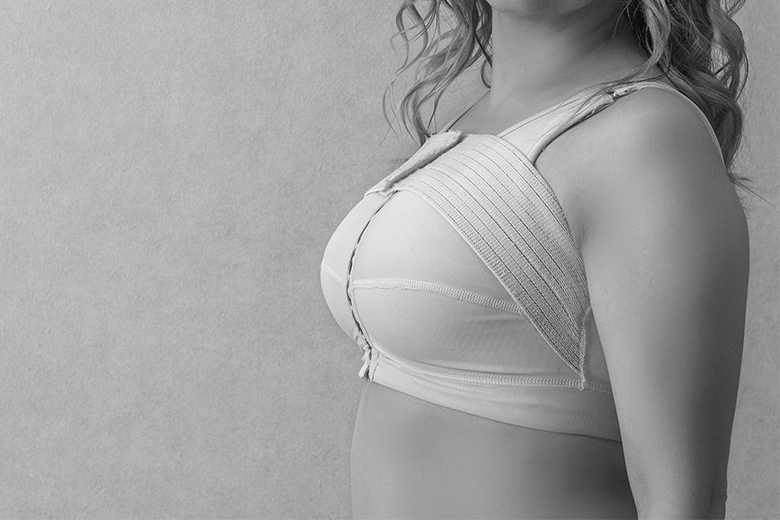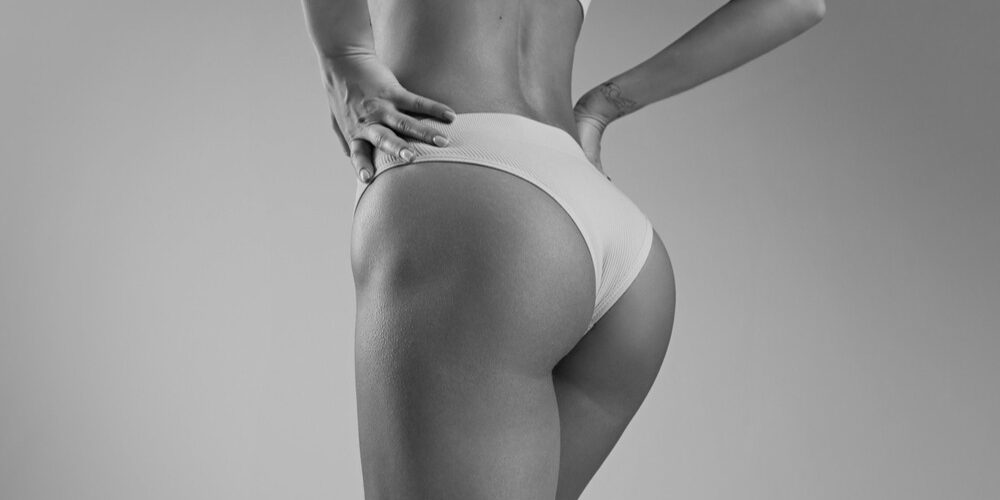August 8th, 2024
Dr. Mulholland, Md
Tummy Tuck Recovery
Recovery after a tummy tuck takes time. Toronto Plastic Surgeons will explain what to expect after the procedure. The recovery period typically lasts for at least two weeks, but you should wait another four weeks before exercising. You should not engage in physical activity without Toronto Plastic Surgeons’s approval, and he will recommend using a light compression belt to help reduce swelling and other possible complications. It should be worn day and night for up to six weeks.
How Long Is Tummy Tuck Recovery?
The area around the tummy tuck scars is where swelling persists for longer, and minor swelling continues to exist in the area for around two months. So long as you maintain your aftercare routine and don’t exert your body to unguided extents, you will have a successful recovery. Recovery time can vary on several factors, including the patient’s overall health or whether or not other procedures were performed during the surgery. In general, tummy tuck patients should take two weeks off of work (depending on the physical demands of their job) and can resume light activity after 1-2 weeks. More strenuous activity can resume after 8 weeks, or when Toronto Plastic Surgeons says it is okay to partake. The results will improve as your body heals and the swelling reduces.
Why Does Swelling Occur After a Tummy Tuck?
After surgery, your body sends white blood cells and healing compounds to the area where surgery was performed in order to jumpstart the recovery process. Tummy tuck surgery causes changes to the patient’s lymphatic drainage system. Increased fluids in the area will cause it to grow larger during initial healing. Swelling is a normal response to an injury, so most of the swelling will be located near the incision. A compression garment will help with swelling and yield better results.
The extent of swelling may also depend on the type of surgery you receive. A mini tummy tuck results in less swelling and recovery time versus a traditional tummy tuck. Combining a tummy tuck with another surgery will also increase the swelling and recovery time. Pain medication can also cause constipation, bloating, and increased swelling.
Stages of Swelling After a Tummy Tuck
- 3 weeks after a tummy tuck, swelling is common to occur in the lower abdominal area, and patients will even experience hardness around the belly button.
- 3 months after a tummy tuck, major swelling in the lower abdomen should begin to subside, but mild swelling and puffiness may still be present.
- 6 months after your tummy tuck, you may experience persistent bloating, especially after long hours of standing. A restful night’s sleep will improve any abdominal swelling.
- 8-10 months after a tummy tuck, most swelling will subside. However, fluid retention due to diet and salt intake may be cause for a swollen belly. If you experience a bloated upper or lower abdomen 10 months after a tummy tuck should contact their doctor.
- One year after a tummy tuck, post-surgical swelling will diminish gradually, but there is no specific schedule for individual recovery. If swelling seems unusual, please consult with Toronto Plastic Surgeons.
- Two years after a tummy tuck, a protruding stomach may occur because of visceral fat and loose muscle. In these cases, patients should lose weight to reduce bloating. However, in most cases, you will be fully healed.
Following Toronto Plastic Surgeons’s aftercare instructions is the key to effectively resolving swelling and puffiness after a tummy tuck, along with practicing patience. Patients with a strong immune system who follow post-operative care instructions heal fully and fast.
How Long Does the Swelling Last?
Swelling after a tummy tuck can last for a long time since the surgery is quite extensive. The most noticeable swelling will subside after 2-3 months, but mild swelling in the abdominal region may still be common. Over the course of 1-2 years, patients will notice all swelling diminish. However, the majority of swelling resolves after 2 months.
Because pain, swelling, and bruising are common after a tummy tuck, patients will receive medication to reduce discomfort while they are in recovery. The pain will decrease a few days after the procedure, but in some cases it can take up to 2 weeks for pain to subside.
Do’s and Don’t’s After a Tummy Tuck Surgery
Being patient and following Toronto Plastic Surgeons’s after-care instructions are the key to resolving swelling. Rushing the healing process or exerting yourself against instructions can cause swelling to persist. Do not touch your stitches/the incision as your hands can introduce bacteria and cause infection. Your muscles need time to heal before being exerted, so avoid extensive physical activity until you are told it is alright to go ahead with your regular exercise routine.
9 Tips For Reducing Swelling After a Tummy Tuck
While swelling after a tummy tuck is inevitable, there are some steps you can take to reduce swelling and encourage your body to heal quickly without any complications.
Take the Time to Rest
After your abdominoplasty, it’s important to give your body time to heal and recover. Not only does this mean avoiding strenuous activity, such as intense cardiovascular exercise or weight training following your surgery, but it’s also important to make sure you get enough sleep. Allowing your body to rest will keep your immune system strong, and allow it to focus on healing your midsection from your tummy tuck procedure.
Follow a Healthy Diet
You can help encourage your immune system to heal following your surgery by fuelling your body with healthy, nourishing foods. Opt for healthy foods that are high in protein, which will help your body repair its tissues following the surgery, as well as foods that are high in vitamins C and A. Try to eat meals that feature mainly lean proteins, whole grains, and vegetables, and limit your intake of simple carbohydrates as these types of foods can cause bloating and discomfort. It’s also important to ensure you’re getting adequate fiber in order to maintain good digestion.
Additionally, it’s best to avoid eating foods that may cause gastrointestinal distress or discomfort, such as foods that are high in fat and sugar, dairy products (if you are lactose intolerant), or foods that naturally cause gassiness, such as beans and foods that are high in starch.
Reduce Your Sodium Intake
Too much salt can cause bloating, which can cause discomfort and impede your body’s healing process. Try to eat foods that are low in sodium, and adjust the amount of salt you use to season your food when preparing meals at home.
Drink Lots of Water
Staying hydrated is key to encouraging your body to heal. Try to drink plenty of water throughout the day, and avoid alcohol and caffeinated beverages, which can dehydrate you.
Lightly Exercise
While strenuous exercise may interfere with your body’s natural healing process, it’s important to keep moving: light exercise stimulates blood flow and good circulation throughout your body, including to your abdomen, which encourages speedy healing. Try walking around the block or on a treadmill, or participating in gentle yoga classes (though, if you do this, be careful to avoid or modify any poses that may put a strain on your midsection as it heals).
Use a Compression Garment
A compression garment can help reduce swelling around your midsection, as it will limit the amount of fluid that can accumulate in the area. Your surgeon will advise on the best length of time for you to wear a compression garment following your surgery, but generally one should be worn for around two weeks.
Take Prescribed Medication
After your tummy tuck procedure, your surgeon may recommend or prescribe medication that will help ease any swelling – or discomfort resulting from swelling – after your surgery. Be sure to follow your surgeon’s instructions. Anti-inflammatories that are available over the counter, such as ibuprofen and naproxen, may be ideal. Some anti-inflammatory medication carries with it the risk of blood thinning, so it’s important to follow your surgeon’s instructions, or contact the clinic if you have any questions or concerns about the medication you wish to take.
Maintain Your Drainage Tubes
Drain tubes are medical devices that prevent fluids from accumulating. Your surgeon may recommend that you use drainage tubes for several days immediately following your abdominoplasty.
Show up to all Scheduled Appointments
After your tummy tuck, your surgeon will set follow-up appointments with you, to ensure your body is healing properly and without any adverse side effects. It’s important to keep these appointments, as your surgeon will be able to detect any issues with your healing and recommend steps that can be taken to minimize complications and keep you on the right track.
FAQ
What to Eat After Tummy Tuck to Reduce Swelling?
After a tummy tuck, focus on staying hydrated and eating lean proteins like chicken, fish, and eggs to promote healing. Include anti-inflammatory foods rich in vitamins A and C, and avoid salty, sugary, and fatty foods to reduce swelling and discomfort.
Does Walking Reduce Swelling After a Tummy Tuck?
Yes, gentle walking after a tummy tuck can help reduce swelling by promoting blood circulation and preventing fluid buildup. However, avoid strenuous activity and follow your surgeon’s guidelines to ensure a safe recovery.
Can a Mini Tummy Tuck Help with Lower Belly Swelling or Bulging?
Yes, a mini tummy tuck may be ideal for patients who have a smaller amount of excess skin or fat limited to the lower abdomen. It’s a less invasive option compared to a full tummy tuck and may offer a shorter recovery with reduced swelling. Many patients consider this option either on its own or as part of a Mommy Makeover when targeting post-pregnancy changes.
What Procedures are Often Combined with a Tummy Tuck for Full-body Results?
Tummy tucks are often part of a broader aesthetic plan. Many patients also consider combining their procedure with liposuction for added contouring, labia puffing for intimate area rejuvenation, or a neck lift for improved facial harmony.



